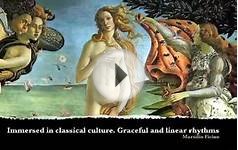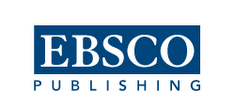 Resource Guide #1: Arts Education (2nd Edition)
Resource Guide #1: Arts Education (2nd Edition)
This publication provides an overview of programs under the No Child Left Behind Act (NCLB) of 2001. These laws are the basis for most federal funding for the nation's schools. This resource guide (pdf, 137 KB) is a layered document with at-a-glance funding information as well as links to more detailed information and resources. You can also review this state-by-state list of 21st Century Learning Center (after-school) grants.
Resource Guide #2: Community Development Block Grant Program
The Community Development Block Grant (CDBG) program is a local economic development program funded through the U.S. Housing & Urban Development (HUD) Department and administered locally. This resource guide (pdf, 212 KB) provides the background, eligible activities, and detailed grant examples to assist localities in using this funding opportunity. Also review this more recent collection of CDBG grants.
Resource Guide #3: Transportation Enhancement Program
The U.S. Department of Transportation operates the Transportation Enhancement program, which helps fund local transportation-related cultural projects. This resource guide (pdf. 103 KB) provides arts examples and includes the newly reauthorized Transportation Enhancement Program guidelines that can assist organizations with navigating this funding opportunity. In 2013, federal transportation grant programs were reauthorized by Congress and a summary of how that impacted the TE program, and further examples, are provided here.
 Resource Guide #4: International Cultural Exchanges
Resource Guide #4: International Cultural Exchanges
The Department of State's Bureau of Educational and Cultural Affairs seeks proposals for projects relating to cultural exchange and public diplomacy. This resource guide (pdf) for international cultural exchange is the third version published in six years - an area of the federal government that has experienced significant changes in its programming in the past few years.
Resource Guide #5: Military Base Closings
In November 2005, the 2005 Base Realignment & Closure Commission (BRAC) recommendations went into effect. As a result, 22 major defense installations were closed and another 33 were designated to have their workforce realigned, impacting 27 states. Americans for the Arts has published a resource guide (pdf, 113 KB) for local arts organizations in those affected states to consider how to get involved in the future redevelopment possibilities.
Resource Guide #6: Earmarks for Cultural Agencies and Institutions I
An earmark is a sum of money that, upon request of one or more representatives or senators, Congress directs to a specific project such as a building, transportation project, or cultural program or service. This resource guide provides a list of earmarks for cultural agencies, by federal agency, that Americans for the Arts identified in the FY 2005–FY 2006 (pdf, 245 KB) appropriations bills. Since 2010, U.S. House GOP leaders have put in place a ban on earmarks.









 EBSCO Publishing, headquartered in Ipswich, Massachusetts, is an aggregator of full-text content. EBSCO Publishing's core business is providing online databases via EBSCOhost to libraries. EBSCOhost is used by libraries, schools, academic institutions, medical...
EBSCO Publishing, headquartered in Ipswich, Massachusetts, is an aggregator of full-text content. EBSCO Publishing's core business is providing online databases via EBSCOhost to libraries. EBSCOhost is used by libraries, schools, academic institutions, medical...